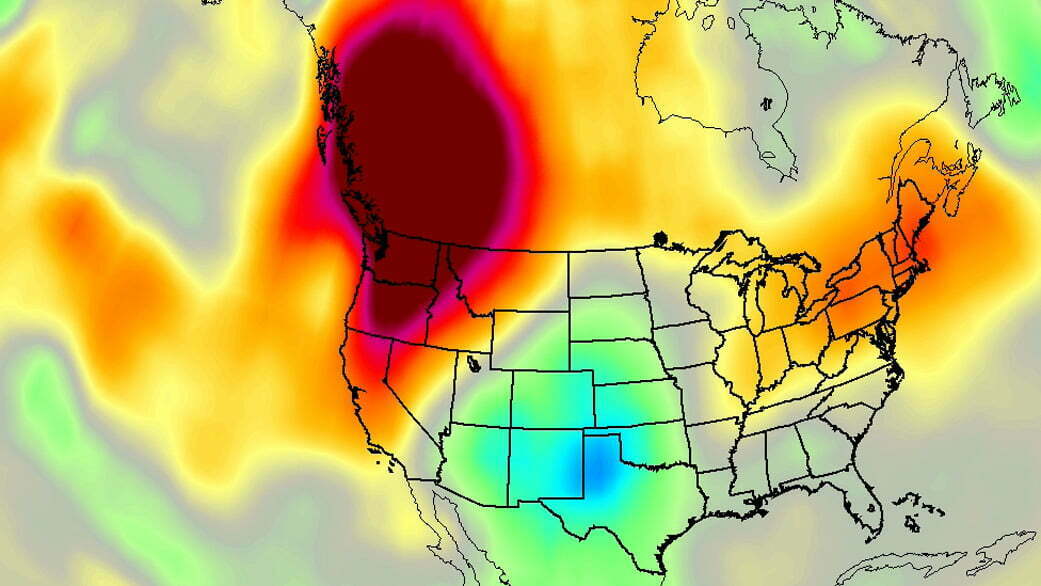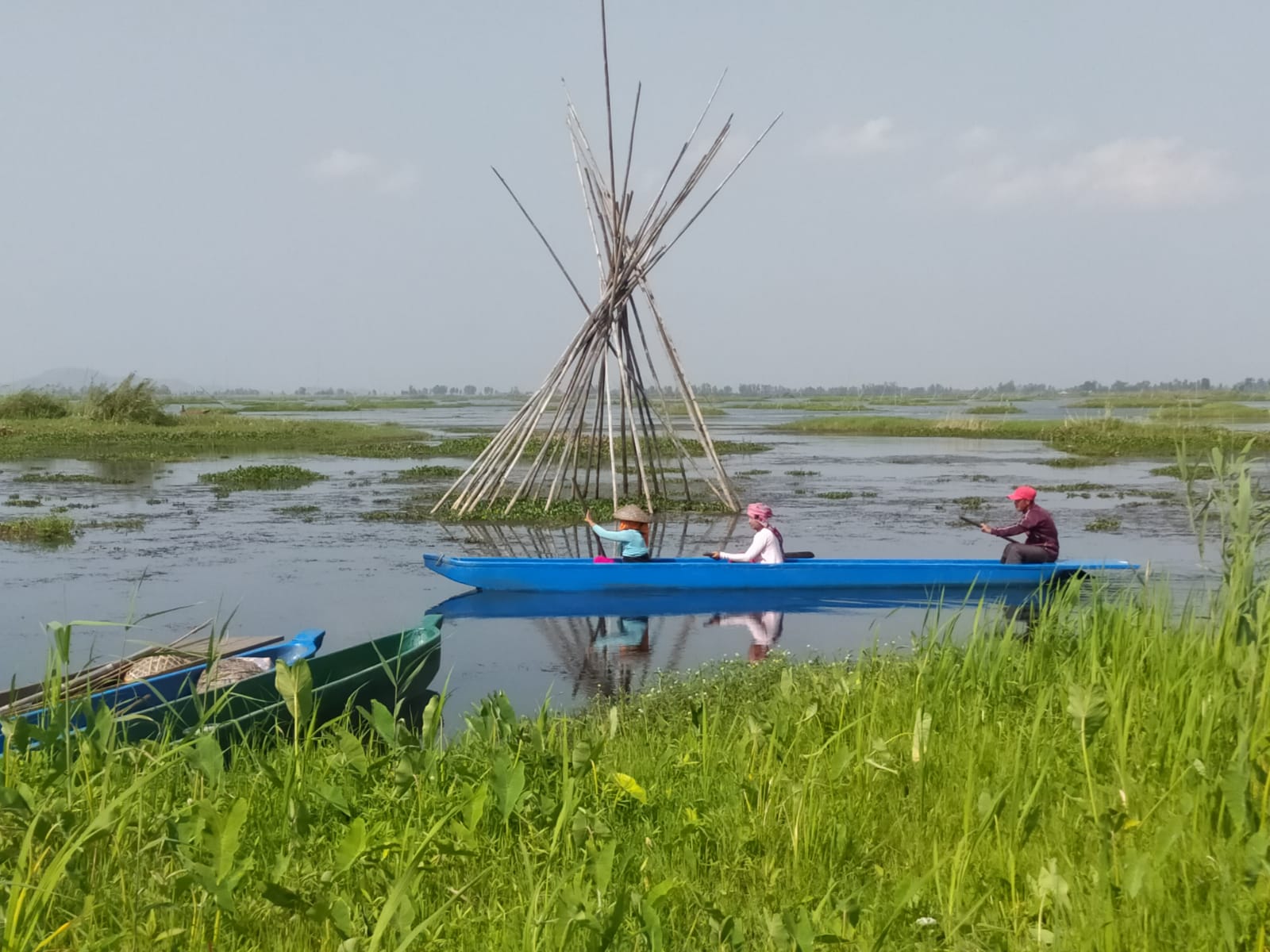So far, an amount of Rs 16.86 crore has been released by this Ministry to the Government of Manipur which includes an amount of Rs 428 lakh released during the year 2018-19. No proposal was received from the State from FY 2019-20 to 2022-23.
TFM Report
An amount of Rs 16.86 crore had been released by the Ministry of Environment, Forest & Climate Change to the Government of Manipur which includes an amount of Rs 428 lakh released during the year 2018-19. Further, the Integrated Management Plan (IMP) prepared by LDA has been examined by IIT Roorkee and certain suggestions have been given. The Ministry has asked the LDA to submit a revised plan addressing all issues related to conservation of Loktak Lake for endorsement of the Ministry for its implementation.
According to a reliable source, Bhupender Yadav, the Union Minister for Environment, Forest and Climate Change while talking about three major issues on Loktak Lake Ecosystem and suggested measures for delisting from Montreux Record is reported to have stated that the Loktak Lake is an integral part of the culture and ecology of Manipur. Prime Minister Narendra Modi has been very clear that India is land where nature is worshipped and therefore our scared natural resources will be protected and preserved at all costs. So, the government remains committed to developing Loktak Lake as one of the most enchanting and magnificent lakes of the world with community engagement and collective efforts.
According to sources, he said that the the Loktak Lake was included in the Montreux Record in 1993 as a result of ecological problems such as deforestation in catchment area, siltation, infestation of water hyacinth and paragrass and pollution.
The three major issues resulting in listing of Loktak Lake in Montreux Records are:
- Changes in water regimes which have triggered phumdi proliferation, water quality deterioration, loss of migratory fish and degradation of KLNP habitat
- Pollution from upstream areas which led to water quality degradation and accelerated phumdi proliferation
- Conversion of natural phumdi into fish farms which reduced the capacity of Loktak to moderate and buffer water regimes
The Government of Manipur has been advised to submit an action plan to mitigate these issues along with a timeline for removal of Loktak Lake from the Montreux Records. The Ramsar Information Sheet (RIS) of Loktak Lake is to be updated on priority basis by compiler / Loktak Development Authority (LDA), for which they have been duly advised by the Ministry.
On what are the measures taken up to control eutrophication and control of discharge of waste water from urban into the Loktak Lake, the minister said that his department has been providing financial assistance for this wetland since 1988-89 to the Government of Manipur for undertaking conservation activities like survey & demarcation, catchment area treatment, fisheries development, removal of phumdis, constructing water harvesting structures, small scale engineering works, creation of education and awareness etc.
The Loktak Development Authority, Department of Forests, Govt. of Manipur is the implementing agency. So far, an amount of Rs 16.86 crore has been released by this Ministry to the Government of Manipur which includes an amount of Rs 428 lakh released during the year 2018-19. Further, the Integrated Management Plan (IMP) prepared by LDA has been examined by IIT Roorkee and certain suggestions have been given. The Ministry has asked the LDA to submit a revised plan addressing all issues related to conservation of Loktak Lake for endorsement of the Ministry for its implementation.
On measures for upliftment of livelihood or alternative livelihoods of the wetland people, Bhupender Yadav informed that as per the information provided by Government of Manipur, LDA has been taking up certain livelihood development activities for local communities who are dependent on Loktak Lake. The government, giving shape to Prime Minister Narendra Modi ji’s vision of conserving our Amrit Dharohar, also intends to enhance livelihood opportunities of the local communities through developing eco-tourism infrastructure in and around the lake and need-based capacity building of local communities.
The integrated Management Plan prepared by the LDA envisages activities on ‘Sustainable Resource Development and Livelihoods’ that includes:
- Community Managed Fisheries Strategy for Loktak aligned with FAO code of conduct of Responsible Fisheries
- Enhancement of fish seed production
- Development of harvest, post-harvest and marketing infrastructure
- Community livelihoods (micro enterprises) programme
- Development of Wetland linked Cultural heritage sites to promote tourism for diversification and value addition of existing fisheries based livelihoods
- Eco guide training for local communities
When asked if there is any judicious water allocation policy for biodiversity service, for fishers, for agriculture, for hydropower etc at Loktak, the minister informed that MoEF&CC has already taken up the issue of Ithai Barrage operation with the Ministry of Power and NHPC. After due deliberation, NHPC has agreed to lower the water level of Ithai barrage gradually to the drawdown level in the forthcoming winter season starting from November 2023 to rejuvenate KLNP habitat as per the technical report of 2011. With lowering of water levels in winters, the park habitat will improve along with improved circulation and flushing in the wetland.
On the timeframe for any steps taken to protect Loktak from inflow of waste (brought down by river/streams flowing) into Loktak, Bhupender Yadav said that as informed by the State Government of Manipur, commissioning of Sewage Treatment Plants (STPs) and implementation of activities as envisaged in the Integrated Management Plan will substantially reduce loading of pollutants into the lake. The State Government has also commissioned the construction of STPs at Nambul with the financial assistance of Rs 100 crore provided under the NRCP scheme by NRCD for the effective functioning of existing waste management infrastructure. It will be commissioned by June 2023 to capture and treat waste from Imphal City and Nambul River and take care of the discharge of untreated sewage into Loktak.
On the long term plan to protect the lake from encroachment (when govt removing private farms along Mayang Imphal-Toubul road & lake), the minister Bhupender Yadav said that MoEF&CC has suggested the Government of Manipur to immediately submit an action plan along with a timeline and a map with clear demarcation of the wetland boundary following guidelines provided by MoEF&CC and as per provisions laid by the Ramsar Secretariat for removal of Loktak Lake from Montreux Record. The Ramsar Information Sheet (RIS) of Loktak is to be updated on priority basis by the LDA.
He also said that Loktak Lake in Manipur was designated as Ramsar site on 23.03.1990 under Ramsar Convention and being a Ramsar site, the Wetlands (Conservation and Management) Rules, 2017 are applicable to the lake. A brief document of the lake has already been prepared. RIS itself is a kind of brief document.
On what is the responsibility of National Hydroelectric Power Corporation Limited (NHPC) towards Rehabilitation and Resettlement of displaced communities affected by the Loktak hydroelectric power project since 1983?
Bhupender Yadav said that Loktak Hydroelectric Project was implemented before the EIA notification 1994 and 2006. Therefore, Environment Clearance of the Project was not applicable for the construction of the project. Works on the project commenced in 1971. The project was commissioned in year 1983.
NHPC has informed that for construction of Loktak project 217.09 ha of private land altogether had been purchased from landowners of 11 villages at different sites of the project. Full compensation was paid to land owners before land possession. Hence, Rehabilitation and Resettlement was not applicable at that time.
The Ministry of Environment, Forest & Climate Change has been providing financial assistance for this wetland since 1988-89 to the Government of Manipur for undertaking conservation activities like survey & demarcation, catchment area treatment, fisheries development, removal of Phumdis, constructing water harvesting structures, small scale engineering works, creation of education & awareness etc. Loktak Development Authority, Department of Forests, Govt. of Manipur is the implementing agency. So far, an amount of Rs 16.86 crore has been released by this Ministry to the Government of Manipur which includes an amount of Rs 428 lakh released during the year 2018-19. No proposal was received from the State from FY 2019-20 to 2022-23.
However, an Integrated Management Plan (IMP) of Loktak Lake was received in the Ministry for endorsement. The plan envisages to put in place Manipur River Basin scale actions, such as conserving catchment to control silt, abating pollution generated from upstream cities, demarcating wetland boundaries, managing water regimes and supporting livelihoods diversification of wetland dependent communities. IMP includes core and non-core activities in the lake area and its zone of influence (catchment, command areas, etc.). The IMP was appraised through IIT-Roorkee and observations given by IIT-R had been sent to the Govt. Of Manipur for revision of the IMP. The revised proposal is yet to be received by the Ministry. The MoEF&CC will consider the proposal on priority as per the cost sharing formula between the Central and State Government and the funding norms of NPCA.
On plans to accommodate the fishing community in lake management plan, the minister said the State Government of Manipur has informed that community Managed Fisheries Strategy for Loktak aligned with FAO code of conduct of Responsible Fisheries will be formulated involving local fishing communities.
Fishing in Loktak Lake has been carried out since time immemorial. The fishermen are an integral part of the Loktak ecosystem. The state government is working to promote healthy capture fisheries, which ensures that ecosystem processes such as migration pathways, water quality and phumdi distribution are not adversely affected.
Ministry of Environment, Forest and Climate Change had earlier stated that any effort towards the effective management of Loktek Lake, which is a designated Ramsar site, shall be in line with the norms of Ramsar Convention as well as Wetlands (Conservation and Management) Rules, 2017.
Minister of State for Environment, Forest and Climate Change Ashini Kumar Choubey said this while answering questions related to Loktak Lake raised by Janata Dal (United) Member of Parliament Anil Hegde on the floor of Rajya Sabha on April 6.
On that day, he also said that as per the information provided by Government of Manipur, approval from Department of Expenditure, Ministry of Finance for the proposed ‘Sustainable Loktak Lake Ecosystem Restoration, Eco Tourism and Livelihood Improvement’ project has not been received so far.
The post Loktak Lake: Ministry asks LDA to submit revised plan addressing all issues first appeared on The Frontier Manipur.
Read more / Original news source: https://thefrontiermanipur.com/loktak-lake-ministry-asks-lda-to-submit-revised-plan-addressing-all-issues/






 Naosekpam Ajit is a researcher based in Himachal Pradesh. His research interests are Biocontrol and Bioconversion.
Naosekpam Ajit is a researcher based in Himachal Pradesh. His research interests are Biocontrol and Bioconversion.